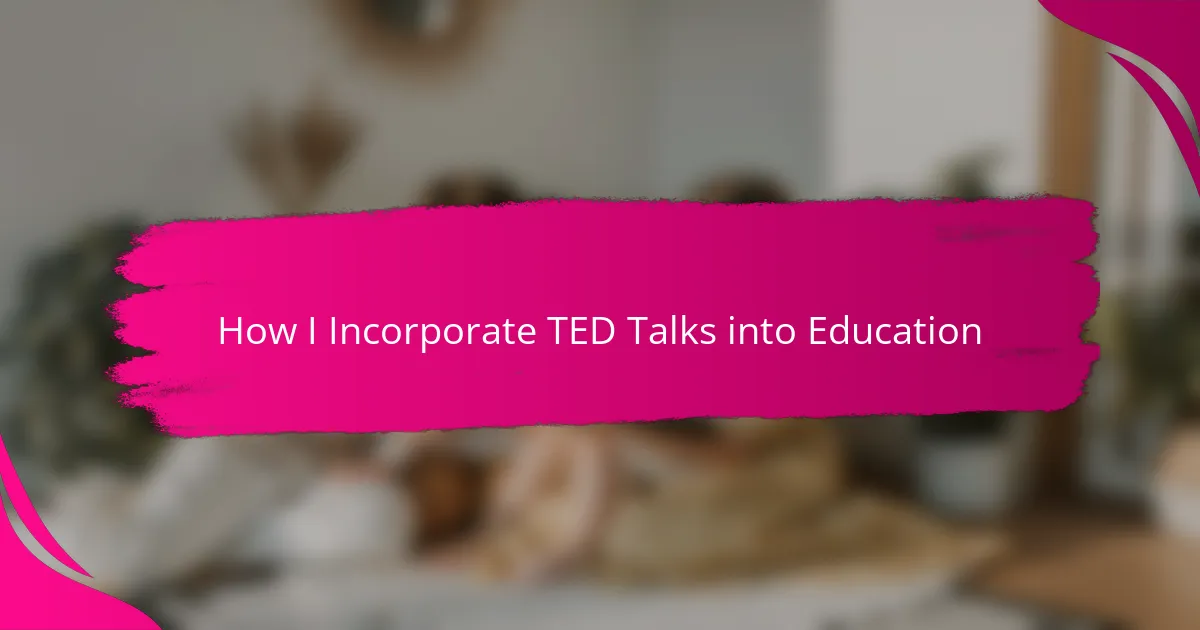Key takeaways
- TED Talks enhance education by making complex topics relatable through storytelling and real-world experiences.
- They provide fresh perspectives for parents, fit into busy schedules, and inspire meaningful family discussions.
- Selecting age-appropriate talks that spark curiosity helps children engage more deeply in learning.
- Encouraging conversations and skill-building through TED Talks fosters critical thinking and emotional growth in children.
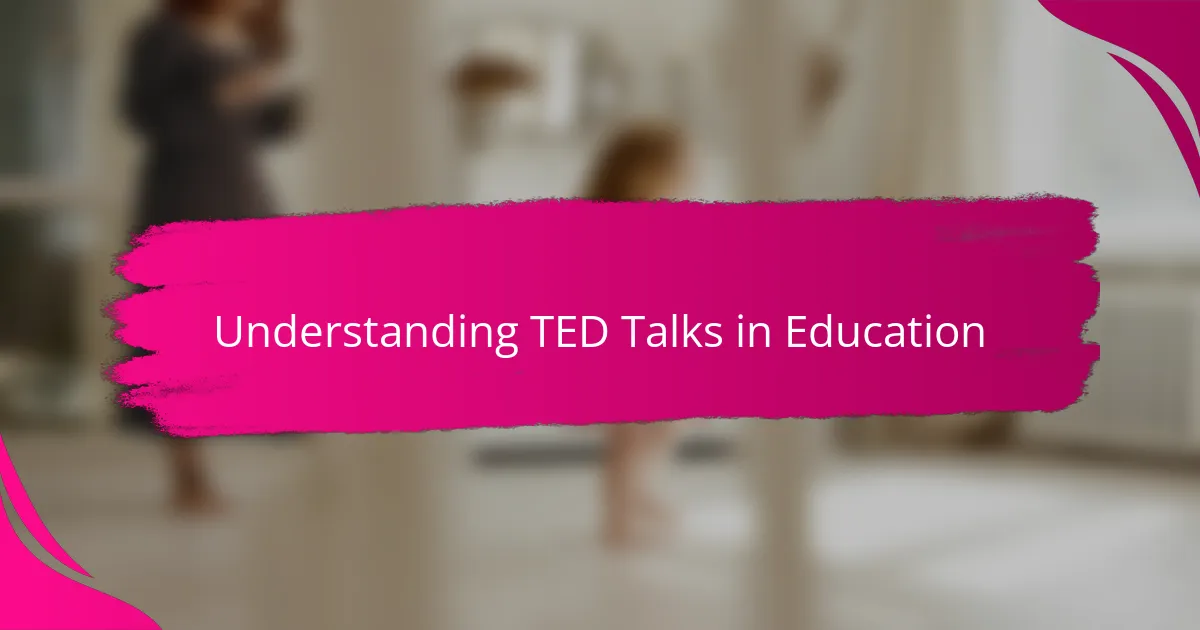
Understanding TED Talks in Education
TED Talks have become a powerful tool in education because they bring ideas to life through storytelling and real-world experiences. I often wonder why some lessons stick with us while others fade away—TED’s engaging format answers that for me by making complex topics relatable and memorable. When I first introduced a TED Talk to my child’s study time, I saw curiosity spark in a way textbooks alone never managed.
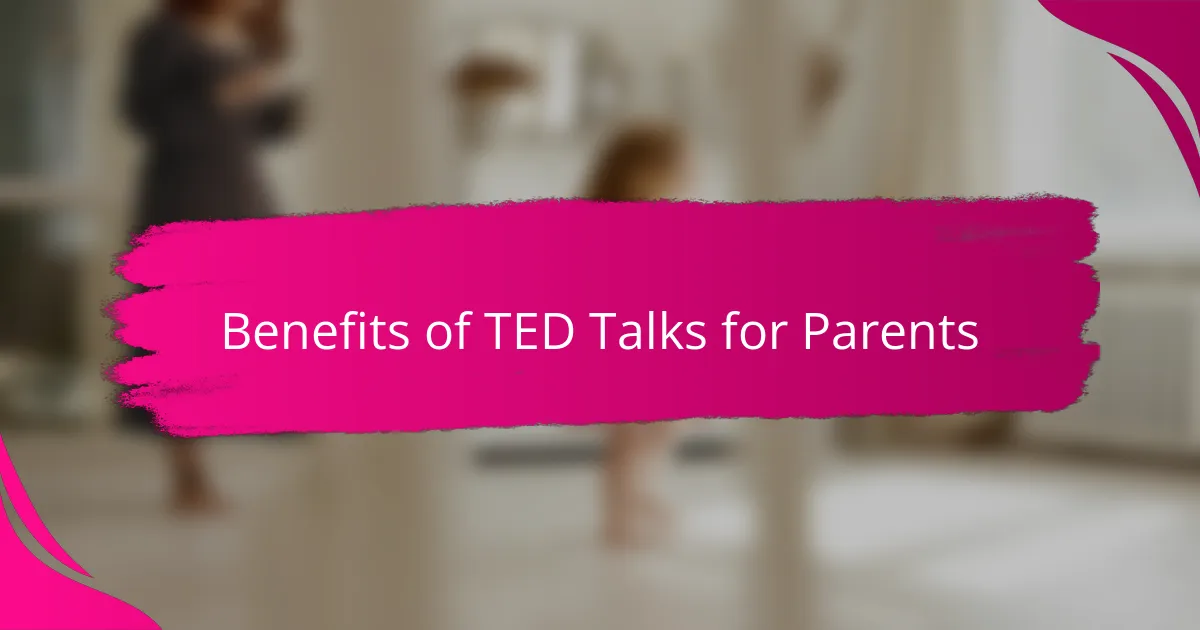
Benefits of TED Talks for Parents
One of the benefits I’ve noticed for parents is how TED Talks provide fresh perspectives on parenting challenges. Have you ever felt stuck trying to solve a problem with your child, only to find a TED speaker’s insight suddenly makes everything clearer? Those moments gave me reassurance and new tools to try, which made the whole parenting journey feel less overwhelming.
Another thing I appreciate is how TED Talks fit perfectly into a busy schedule. Honestly, finding time to read lengthy books or attend workshops felt impossible for me. But with talks lasting usually under 20 minutes, I could learn something valuable during a quick coffee break or while waiting for the kids’ practice to end. This accessibility brings continuous growth without guilt or extra stress.
Finally, TED Talks often inspire deeper conversations within the family. After watching a talk together, my children and I naturally started discussing ideas we never would have raised otherwise—like empathy, resilience, or creativity. It’s powerful how these talks can open doors to meaningful dialogue that strengthens our connection as parents and children. Have you experienced this kind of shared reflection? It’s a simple yet profound benefit that I cherish.
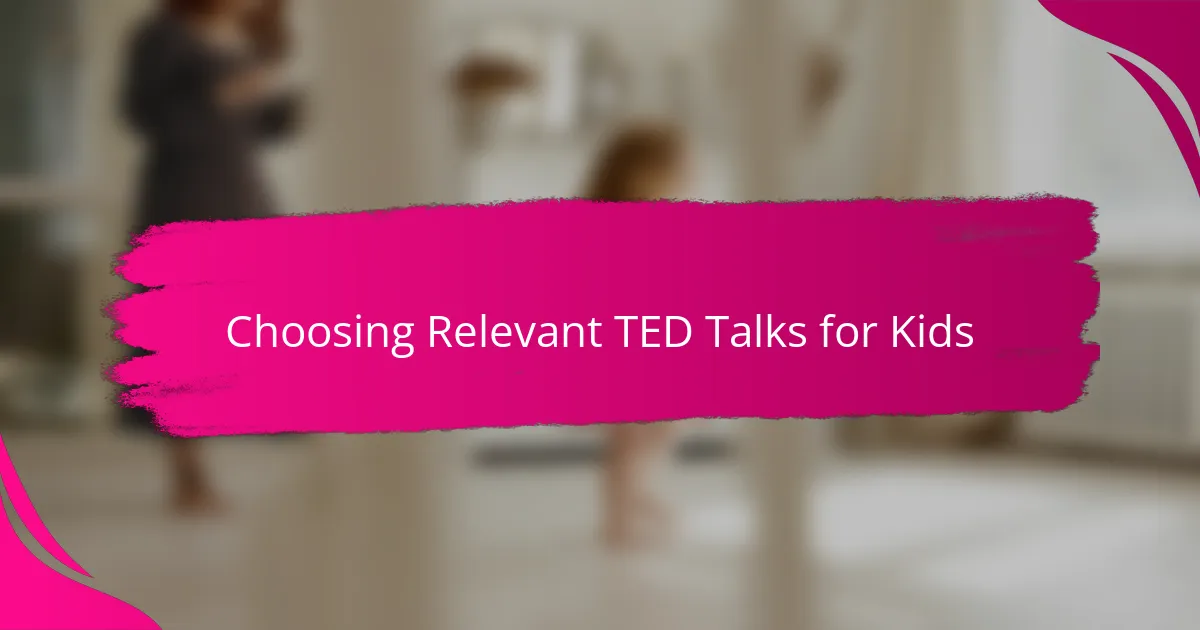
Choosing Relevant TED Talks for Kids
When selecting TED Talks for kids, I focus on topics that resonate with their current interests and challenges. It’s striking how a well-chosen talk about kindness or curiosity can suddenly make abstract values feel real and achievable. Have you ever seen your child’s eyes light up when something clicks? That moment validates the effort of finding just the right talk.
I also consider the age-appropriateness of the content carefully. Sometimes, a brilliant talk might inspire adults but leave kids confused or overwhelmed. I once picked a talk on neuroscience for my middle schooler and quickly realized it was too dense; next time, I opted for a simpler explanation, and the difference was like night and day. It taught me that relevance isn’t just about topic but also delivery style.
Lastly, I look for talks that spark questions rather than just provide answers. TED speakers who invite wonder or challenge conventional thinking encourage my kids to think critically instead of passively absorbing information. Have you noticed how a good question often leads to deeper learning than a straightforward explanation? Those talks become starting points for ongoing conversations at home.
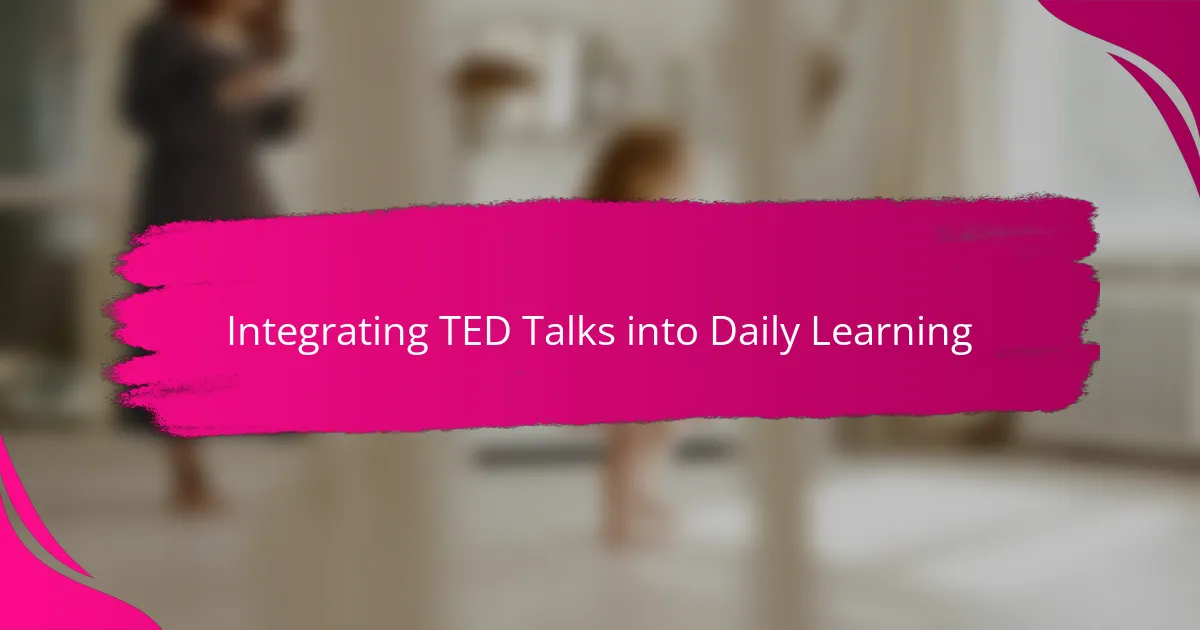
Integrating TED Talks into Daily Learning
Integrating TED Talks into daily learning became a natural extension of how I approached my child’s education. Instead of treating these talks as just another assignment, I weave them into everyday moments—like during breakfast or car rides—turning learning into casual, enjoyable experiences. Have you ever noticed how kids soak up knowledge best when it doesn’t feel like work? For me, TED Talks hit that sweet spot perfectly.
I also use TED Talks to complement what my child is already studying, which makes lessons more vibrant and meaningful. For example, while exploring science topics, I played a short TED Talk that connected the theory to real-life innovations, sparking questions my child eagerly asked afterward. When learning feels alive and relevant, motivation skyrockets—I’ve seen it firsthand.
Sometimes, I simply let curiosity guide us. If my child expresses an interest in a new subject, we hunt for a related TED Talk and watch it together. This spontaneous discovery creates shared excitement and models the joy of lifelong learning. Have you found that following those learning tangents often leads to the most memorable moments? I always cherish those times as much as my child does.
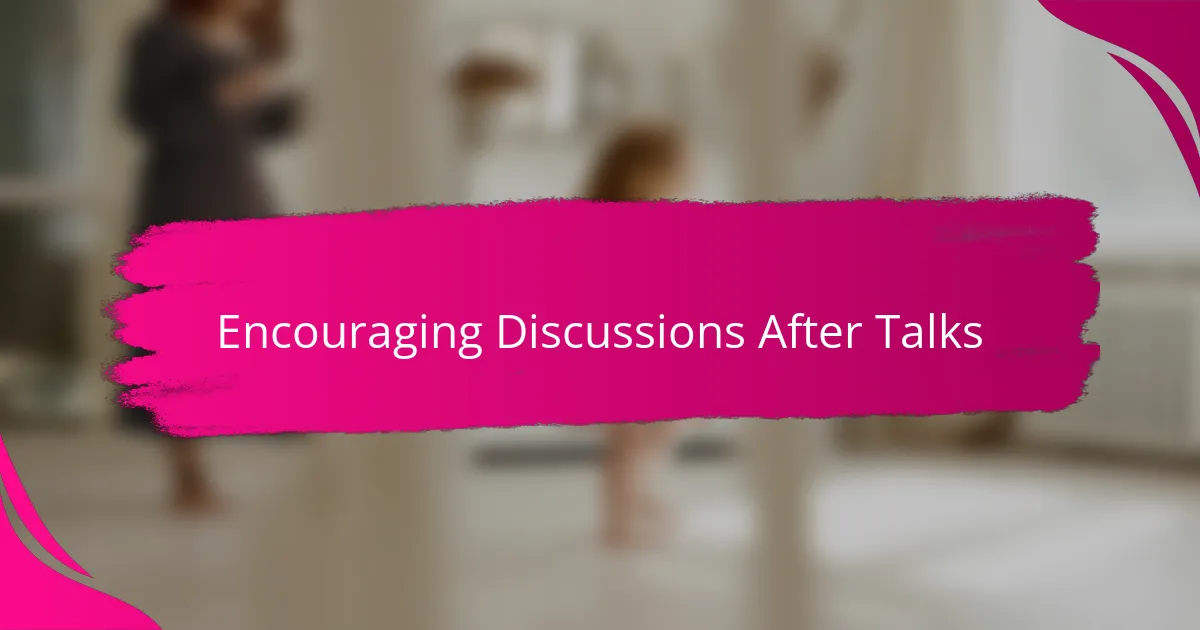
Encouraging Discussions After Talks
After the talk ends, I make it a point to pause and ask open-ended questions like, “What stood out to you?” or “Did anything surprise you?” These moments often reveal my child’s unique perspective, and I find it fascinating how a simple question can spark hours of conversation. Have you noticed how kids open up when they feel their thoughts truly matter?
Sometimes, I notice a bit of hesitation or silence right after a talk, so I gently share my own reactions first. By expressing what moved or challenged me, I create a safe space for my child to share honestly without fear of judgment. That vulnerability often leads to deeper discussions about feelings and ideas, making the experience more meaningful for both of us.
I’ve also tried turning post-talk conversations into small projects or challenges, like trying out a kindness experiment or practicing a new skill mentioned in the talk. This practical step keeps the momentum going and shows my child that ideas aren’t just for thinking—they’re meant for living. Don’t you think putting ideas into action helps lessons stick more powerfully? I certainly do.
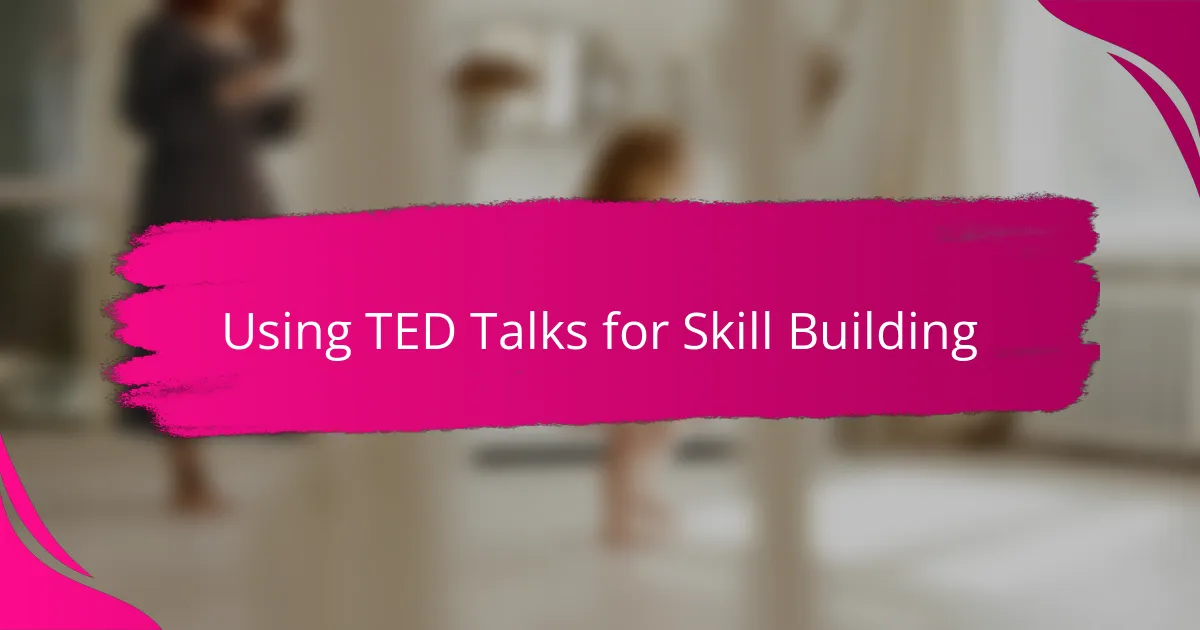
Using TED Talks for Skill Building
Using TED Talks for skill building has been a game changer in how I help my child develop critical abilities. For example, watching a talk on effective communication gave us a practical framework to practice active listening at home. Have you ever noticed how a clear model can suddenly make a challenging skill feel achievable? That’s exactly what happened for us.
I also appreciate how TED Talks introduce diverse skills that textbooks might overlook, like resilience or creativity. One time, after a talk about embracing failure, my child approached a tough homework challenge with a new mindset—less fear, more curiosity. It’s incredible how a short, inspiring story can shift attitudes and build confidence that lasts beyond the viewing moment.
Sometimes, I wonder if we miss out on so much when we rely only on traditional learning methods. Using TED Talks invites my child to see skills in action through real people’s experiences, making development feel less abstract and more personal. Don’t you think showing practical examples can ignite a deeper desire to grow? From my experience, TED Talks do just that every time.
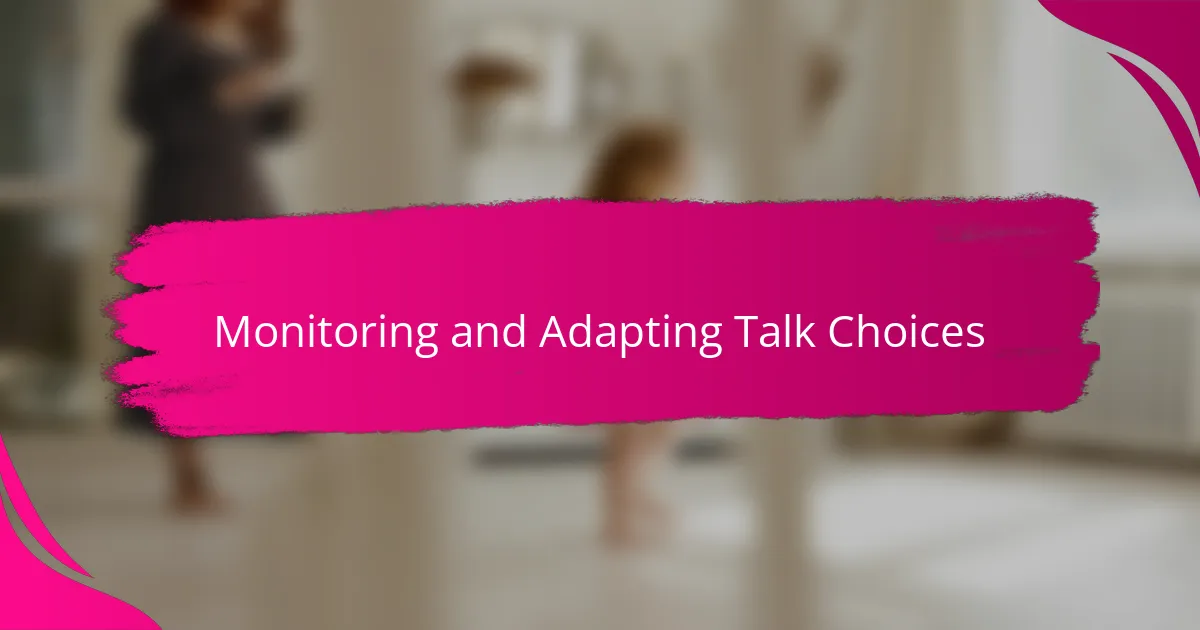
Monitoring and Adapting Talk Choices
Monitoring which talks truly resonate with my child has been essential in keeping TED Talks effective and engaging. I pay close attention to their reactions—whether they seem curious, frustrated, or inspired—because those cues guide me in choosing what to watch next. Have you ever noticed how a child’s enthusiasm can instantly tell you if the material is hitting the mark? For me, those moments are priceless feedback.
There have been times when a talk that seemed perfect on paper didn’t land well. In those cases, I don’t hesitate to switch gears and try a different approach or topic. This flexibility keeps the experience fresh and respects my child’s evolving interests and emotional readiness. Isn’t it reassuring to know that adapting plans doesn’t mean failure but rather thoughtful parenting in action?
Occasionally, I revisit talks that sparked previous interest but introduce new questions or challenges as my child grows. This ongoing adaptation transforms TED Talks from one-time shows into dynamic learning companions. How often do we get the chance to tailor education so personally? I’ve found this process not only enriches my child’s understanding but also strengthens our connection through shared discovery.
